The rules to this system are quite simple … As simplicity always works in my book of trading. It is so true that most traders over complicate things which in the end makes more losses than wins.
Why is that? Well, people tend to think that since trading is one of the hardest things to win at they tend to think that it must be sophisticated, when in reality it is very simple.
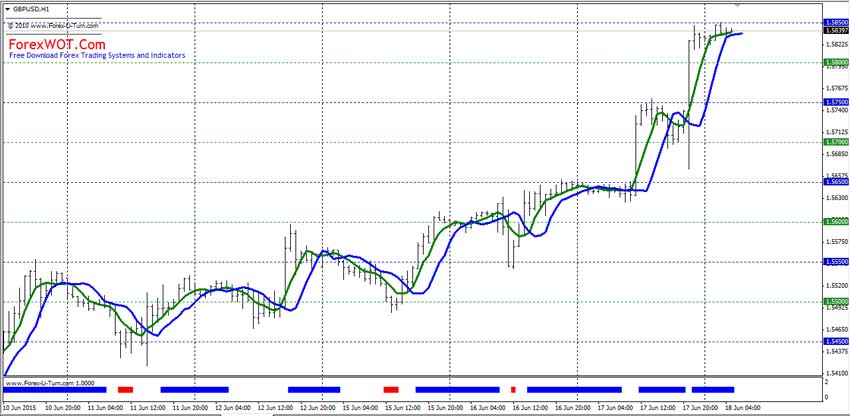
You see, what traders fail to realize is that the “Fear and Greed” is what makes us fail and NOT the system itself. We have Doctors and Lawyers who feel that the BIG money they make in their professions is not enough to satisfy their need for GREED and they think that just because they went to Law School or Doctors University that they have the intelligence to ‘outsmart’ the markets.
Well many of them have come to realize that it does not take smarts to win at trading. Rather, it takes sheer utmost discipline instead. And, it takes simplicity and a good trading system to succeed.
Unfortunately, when a lot of these highly educated people come to the market they usually have big trading accounts like $50,000 to $100,000 to play with. They make the mistake that the more money they have the easier the success will come…
This is why I want to go over the most important thing first before we get into the system itself. Can you guess what that is? If you guessed “Money Management” or “Leverage” then you just hit the nail bang on the head!
USE GOOD MONEY MANAGEMENT PRACTICES
First rule of thumb is: Do NOT Over Trade! Over trading comes in a few different forms, and one of the most common mistakes that traders make is leveraging their account too high by either trading too many times in any one trading session, or by trading too much of their account at one time. In other words: Over – leveraging!
Leverage Is A Double Edged Sword!
Let’s first start with trading leverage:
Just because one lot [100,000 units] of currency only requires as low as $250 {400 to 1} as a minimum margin deposit, it does not mean that a trader with a $5,000 in his or her account should be able to trade 15 to 18 lots.
One lot is $100,000 and should be treated as a $400,000 investment and NOT the $1,000 put up as margin. However, most traders analyze the charts correctly and place sensible trades for the most part, but yet they tend to over leverage themselves.
As a consequence of this, they are often forced to exit a trade position at the wrong time or become too emotionally charged to be in a constructive frame of mind to trade profitably.
Another form of “over trading” is to get in and out too many times in 1 trading session. If you are a scalper kind of trader, then you should only look to do 3 trades maximum.
If you’re an “intraday trader” then you should only look to do 1 trade a day but NO MORE than 2 trade setups each day in each session. If you use this trader mentality you’ll avoid over trading known as gambling when you try and trade 5 to 10 trades in just a few hours…
However, a good rule of thumb is to never use more than 5% of your trading account capitol at any given time, especially with HIGH leverage of {400 to 1} particularly for NEW traders no matter how much Education you may have under your belt, or when learning a new trading system such as this one.
I recommend using an account with a more conservative level of leverage of no more than 100 to 1 or at most 200 to 1, and you might want to risk even less like 2% or even 1% as apposed to 5%.
So let’s say we have an account size of $1,000 and we want to risk 5% on a trade to make this example easy to figure out mathematics wise. So say the SL Stop Loss is 100 pips and we want to risk 5% of our capitol… What lot size can we trade?
A lot of traders really stumble to figure this out properly, I’m not perfect! I too had great difficulties to try and figure this out properly and to try and explain it is not easy! So let’s get back to the calculation folks…
A lot of traders seem get “money management” and “leverage” all mixed up. They think that they can risk 5% of their account meaning that they can trade by using the leverage as a guide for this 5% so they end up losing more than 5% of their initial capitol.
They trade like 0.10 one mini lot thinking this is ok when in reality if you lose 100 pips if the price hits your Stop Loss you will in fact lose 10% of your account instead of 5% because it is $1.00 per pip so 100 X $1.00 = $100.00 and, if you want to do a consistent 5% calculation as your account increases or decreases you must calculate the number of pips of the Stop Loss each time by the amount in your account by 5%.
Now let’s look into another part of trading that is very misunderstood in more ways than one…
Let’s Do The Math Traders
Let’s say you’re a Intra-day Trader and you want to use a 1 to 1 win loss ratio? So in this case we will use a 10 trade scale with 80% wins and 20% losers:
For the sake of this explanation let’s say we are using a 100 pip Stop Loss and a 100 pip Take Profit which equals 1 to 1…
So on 8 of the trades we win 800 pips then on 2 of the trades we lose 200 pips. So think about this now… is this actually an 80% winning average? It is in the terms of actual trades won but is it actually 80% in the terms of pips made?
If you answered ‘no’ to this question you are 100% correct. You see, in reality, you made 800 pips but you lost 200 of those 800 so what are we left with? The answer is 600 pips… so doesn’t this sound more like a 60% win loss ratio than a 80% winning average? Indeed it does my friend.
Okay let’s try a 2 to 1 ratio where the Stop Loss SL is 200 pips ad the Take Profit TP is 100. The same applies it’s just the numbers are different. So on 8 of the trades we win 800 pips and then on 2 of the trades we lose 400 pips.
So think about this now… Is this actually 80% in the terms of pips made? If you answered ‘yes’ to this question you are wrong! You see, in reality, you made 800 pips but you lost 400 of those 800 so what are we left with?
The answer is 400 pips… so doesn’t this sound more like a 40% win loss ratio than an 80% average win rate? Indeed it does my friends. 40% is still winning in the markets but doesn’t 70% or even 80% sound better? It sure does to me…
So now let’s do this in the best way possible and let’s reverse the win loss average ratio. Instead, now we are going to use a 100 pip Stop SL and a 200 pip Take Profit TP. For fun let’s see what we end up with…
So on 8 of the trades we win 1,600 pips then on 2 of the trades we lose 200 pips. So now think harder about this calculation my friend? Is this actually an 80% winning ratio average? It still is in the terms of actual trades placed but is it actually 80% in the terms of pips made?
If you answered ‘no’ to this question then so right you are! You see, in this example you did far greater than in the last two examples above. In fact, you made 1,600 pips but you lost 200 of those 1,600 so now what are we left with?
So now what are we left with? The answer is 1,400 pips… so doesn’t this sound more like a 140% win loss ratio than an 80% average win ratio rate?
Indeed it does my friend, there is so many ways that traders have tried to Umanipulate and fudgeU the numbers over the years trying to make it look more {Higher Numbers} appealing than it really is.
So with all that said, I just laid it out for you in an easy to read format with No Bull Crap! When it’s all said and done, it’s not the percentage of wins you make it’s how many pips did you gain…
Think about this my friend… it only makes sense that if your win loss ratio is greater than your lost pips you’re going to be ahead of the game. And trust me, all trading is, is a game. And a lot of the time it’s played dirty! “You really need to be on your toes when you play it?” Sorry I went off topic here for a brief moment.
So many traders alike try to twist money management theories around that it isn’t funny! Stick with the last example I showed you for this system as it’s for the Intra-day traders who trade on the 5 minute or 15 minute time frame and if you try and shoot for a 3 to 1 Take Profit TP / Stop Loss SL in terms of pips made.
Like for example, 50 pip Stop Loss SL to a 200 pip Take Profit TP this may not be achievable on a daily basis trading this on such small time frames. On the EUR/USD pair we certainly don’t have the 200 pip {ATR’s} Average True Range on a daily basis now do we?
So now that we covered the win loss ratio as far as the Stop Loss SL and Take Profit TP is concerned let’s now take a look at what happens when we add more positions as we progress when our account size grows.
This is yet another part of money management that a lot of traders either fail to understand or take seriously. Let’s say we were trading 100,000 dollars worth of currency which equals to $10.00 per pip. And, let’s say we had a starting balance of $10,000 and we told our self that for every $1,000 gained we were going to add another $10,000 dollars to our position.
So when we reached the $11,000 dollar level we now are going to trade $110,000 dollars which equals $11.00 a pip. So for every pip gained on each trade we will be making an extra $1.00 so as you can see as time goes on if we made another 100 pips we also would have added another $100.00
And say we were successful and we were winning 80% of our trades with a 2 to 1 win loss ratio… in no time we would double our account and make 100%. But and this is a BIG Butt! {Utmost Discipline Needed?} What if we had a bad streak of trades which happens from time to time, but now we are trading $200,000 dollars worth of currency which equals $20.00 per pip?
Can you see the horrific consequences this can cause? For example, we will be losing double the amount of money on a single trade which can cause all your profits to be eaten up quicker than you could say ‘Oh No!’
What took you 20 trades to accumulate $10,000 dollars can wipe out all your profits made in just a small handful of BAD trades. So please be careful when adding on to your position and remember to decrease your lot size as you lose so the ‘Impact’ won’t be so painful!
To avoid a situation like this, simply trade the same amount of lots from start to finish – yes it will take you a lot longer to grow your equity in your account but you’ll be practicing strict money management practices. Especially when learning a new system like Forex-U-Turn.
Now that we got that good old money management and leverage out of the way, I want to talk about the news announcements that come out on most days and how it can affect your trading dramatically!
Understand & Follow The Daily Forex News & Analysis Closely
Even though the Forex-U-Turn trading system is based off of Technical Analysis, you must learn the effects and deadly Impact that news has on the Forex Market. I suggest avoiding times of major news announcements as they can have major effects on prices.
It is not uncommon for news announcements that can cause 100 to 200 pip movements in a matter of minutes. Whilst this may sound appealing in a profitable trade, but what if it goes against you? It can cost you equally!
I typically recommend waiting 5 to 10 minutes after the announcement to allow the markets to calm down and choose a direction and then consider placing a trade if you see the correct Forex-U-Turn setup.
Practice this heavily with a demo account before ever entering with real money on the line. If you are in a trade right before the news hits, it is suggested to either tighten up your Stop Loss SL or simply just closing out your trade winning or losing to reserve capitol.
Please do be warned that it is very common that Stop Loss SL and Entries are not respected by many brokers during these times. It is much safer to try and avoid them completely. Here are some Forex News Websites I recommend:
- www.forexfactory.com
- www.dailyfx.com
- www.bloomberg.com
- www.fxstreet.com
Are a few good ones to go by…
YOU ARE PAID HANDSOMELY TO WAIT!
Most of your time trading is waiting for the ideal correct setup to occur. There will always be money left on the table – you will never catch 100% of the move, and once you realize that, you’ll be miles ahead of this misunderstood game.
You are waiting for those perfect setups. The better the setup is, the greater chance of you winning the trade. If you are not winning between 70% – 80% of your trades, you need to step back and start waiting for better setups.
The greater amount of indicators that agree with your potential trade, the higher the chances you have of winning the trade. Remember, you are mainly paid to wait, and the better you are at waiting for the perfect setups, the more money you make.
But you also must understand that after all that waiting for the ideal setup to occur, you then have to wait even more for that trade to mature into a nice profit. So what’s the name of this game? Wait! Wait! Wait! Then wait some more!
If you are scalping the Market for a quick 10 pips, sometimes it can happen in just a few minutes, But in most cases, it can take 15 to 30 minutes for that trade to develop – and trust me, that 30 minutes can seem like a lifetime has flashed before your eyes.
And, if you’re day trading or swing trading it can take even longer for a trade to turn into a BIG winner! It can take hours upon hours to fully blossom into a nice BIG FAT Win! And like I just said, that will feel like a whole lifetime flew right by YOU.
So PATIENCE is such a critical factor in all aspects of trading that without patience you’re more than likely to get out of trades that in other words would have turned into very profitable trades for you.
You have to try your best to put your human impulsiveness aside and put your discipline in full force. As discipline is the ‘key element’ to becoming a successful trader.
Now before I actually show you the system, I want to get into “True Support & Resistance” and how important it is in your trading…
How To Find True Support & Resistance
In this section I am going to show you how to find ‘true support and resistance.’ In the 2 sections to follow I will show you two other forms of how to find support and resistance that I feel will benefit you in your trading activities.
But first, let’s find some good old support and resistance the good old fashioned way… Common it will be fun…
To find true support and resistance we first need to look at a higher time frame if say you trade the M15 time frame. Once we go to a higher time frame we then simply reduce the size of the chart. On Meta Trader 4 platform we would simply Zoom Out.
So once we have the chart reduced in size we now can look to find where price met more than once in the past and put a Horizontal Line on the chart. The more times price hits a certain price level and bounces off of that price level the stronger the support and/or resistance becomes…
Let’s take a look at this chart example so you can learn from it:
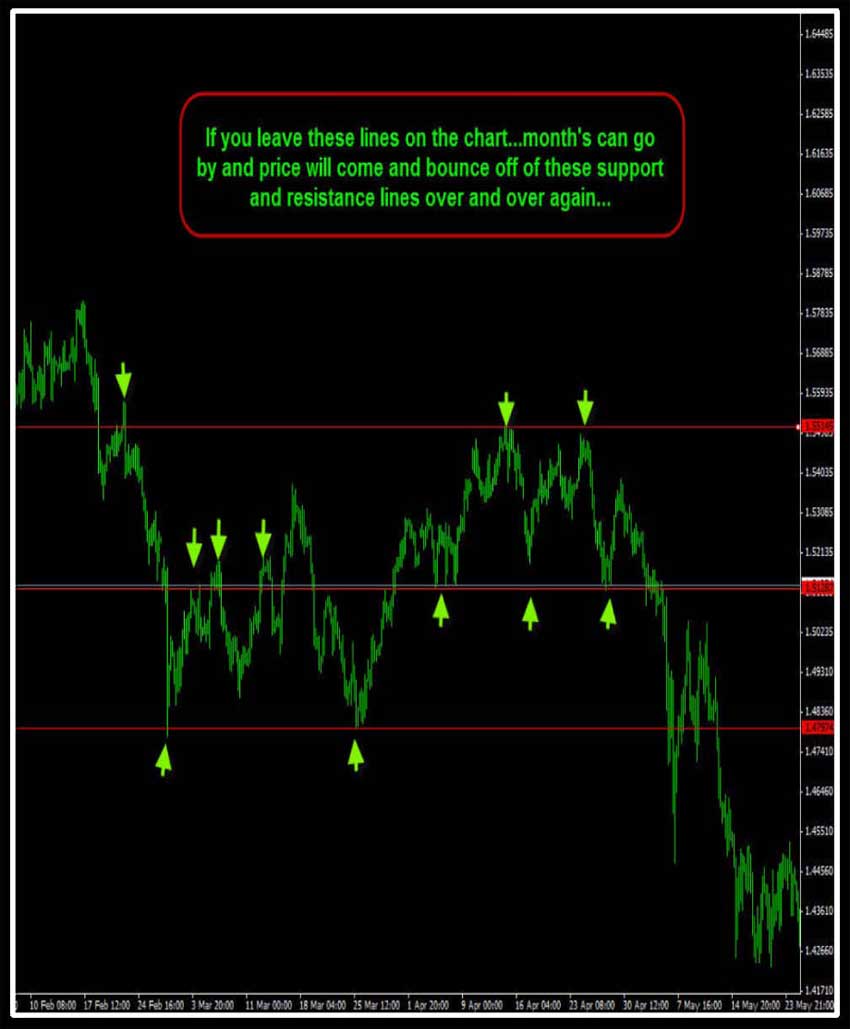
You can do this on any time frame that you are using and it is the only true way to find ‘True Support & Resistance.’
Finding Support & Resistance Using Moving Averages
Some traders use moving averages to find support and resistance and they simply buy and sell off of them. You see, when price is above a moving average and price comes down to the moving average… a lot of the time they will buy off of it.
When price is below a moving average and price retraces back up to that moving average traders will sell off of it. Is this a fluke? Does this happen by chance? Or, is it just dumb luck that this happens? Not at all!
You see, traders use a lot of different moving averages to buy and sell off of based on certain technical factors in the market, but from what I have seen…here are the most effective moving averages traders use to buy and sell off of when price either drops down and touches it, Or when price retraces back up and touches it.
- 21 EMA = Exponential Moving Average.
- 50 EMA = Exponential Moving Average.
- 100 EMA = Exponential Moving Average.
- 200 EMA = Exponential Moving Average.
Now we can’t forget the Simple Moving Averages? I honestly feel that the EMA are more powerful and truly believe that traders use them more so than the Simple Moving Averages…
- 21 SMA = Simple Moving Average.
- 50 SMA = Simple Moving Average.
- 100 SMA = Simple Moving Average.
- 200 SMA = Simple Moving Average.
Some traders use smaller moving averages like the 9 and 13 for other purposes but I just wanted to show you this to learn from… Are any of these moving averages part of the Forex-U-Turn trading system? No it they are not but if you are NEW to trading then this information is very valuable for sure.
Let’s take a look at a chart so you can see what I am talking about…
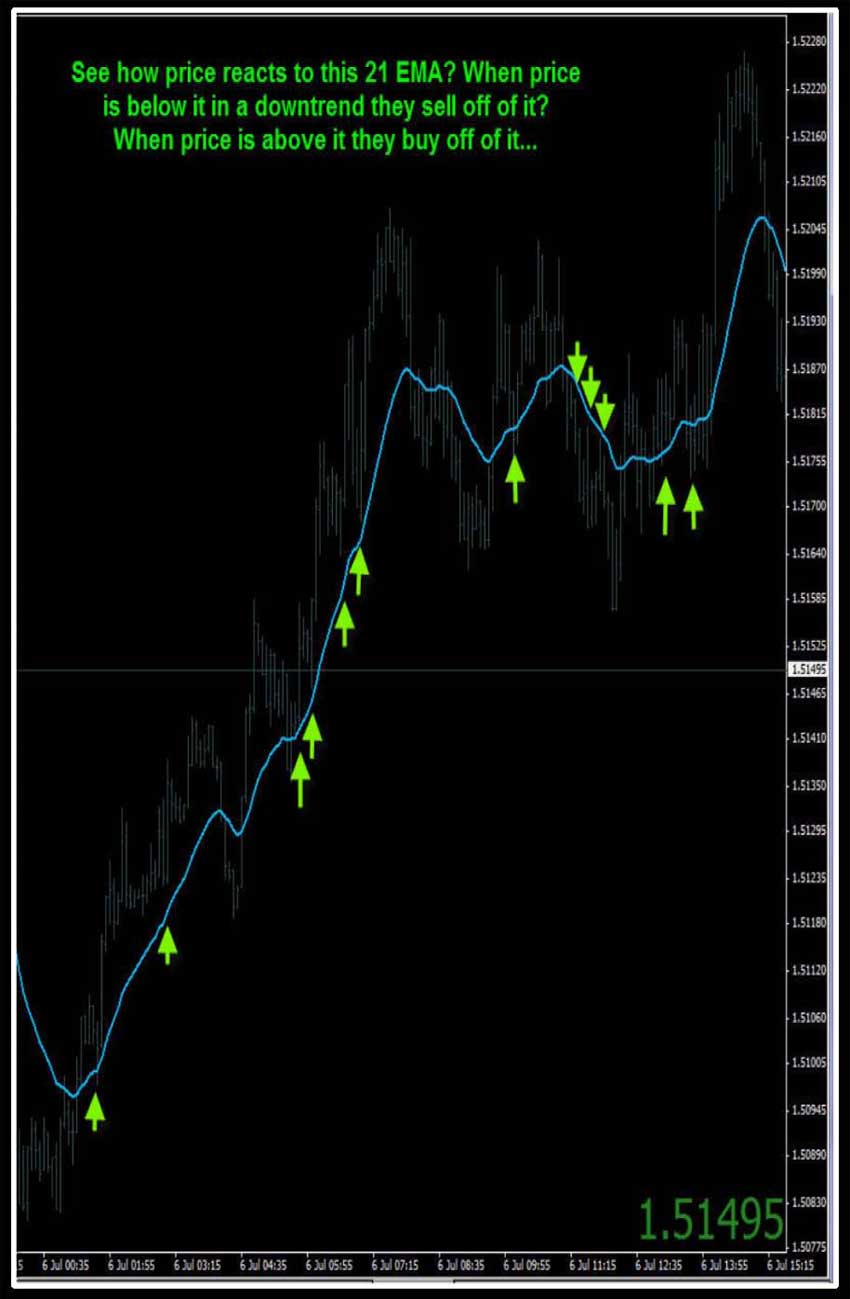
Here are some examples where they are selling off the 21 EMA…

Whole Numbers That Turn Into Support & Resistance
Now we are going to get into a form of support and resistance that is so over looked but is so ‘powerful’ it will blow your mind to see just how important this really is when making an entry trading decision, or an exit decision?
Because whole numbers are so Uextremely effectiveU I have decided to add it to the Forex-U-Turn trading system. It’s only recently that I have took a serious look at this…in the past like 3 years ago some trader was going on about it and I just blew it off!
But now I can see the importance of whole numbers and how traders alike buy and sell off of them just like the two other forms of support and resistance I just talked about. You see, when price comes UP to a whole number like 1.5700 for example traders see this as a major resistance level and either look to take profits at this level or to sell at this level.
When price is coming down to a whole number like 1.5300 for example traders see this as a strong support level and buy off of it. So can you guess what is even stronger than these whole numbers?
When price comes down or up to a whole number like 1.5000 or 2.000 for example, they are considered VERY STRONG turning points in the market.
Not just whole numbers are extreme buy and sell points, but in-between numbers have some merit, too. Meaning, 1.5150 is also considered a point in which traders look to buy when price is coming down to this price or sell when price is coming up to this price.
I like to call the whole numbers like 1.5400 ‘majors’ and the in-between numbers 1.5450 ‘minors’ because the whole numbers are easier to remember than the in-between numbers. It’s a lot easier to remember a price to buy or sell at 1.2450 as apposed to 1.2434. You see what I mean?
And, if you take a serious look at these whole numbers you will see price come up or down to them and stall some times and price will hang around there for hours sometimes until traders decide to break thru it or buy or sell off of that major/minor price level.
Another thing to remember is “True Support & Resistance Traders” Buy off of support and Sell off of resistance. So the 3 different ways I just showed you hot to find true support and resistance is 3 of the sure fire ways to find it and to use it to your advantage if that you have a entry setup to buy or sell and major support or resistance is near by then it is best to not do the trade setup.
Let’s now take a look at a few chart examples to show you exactly what I mean. Next we will cover exits of your trade positions…I have few different ways to show you how to get the most pips possible out of your trading.
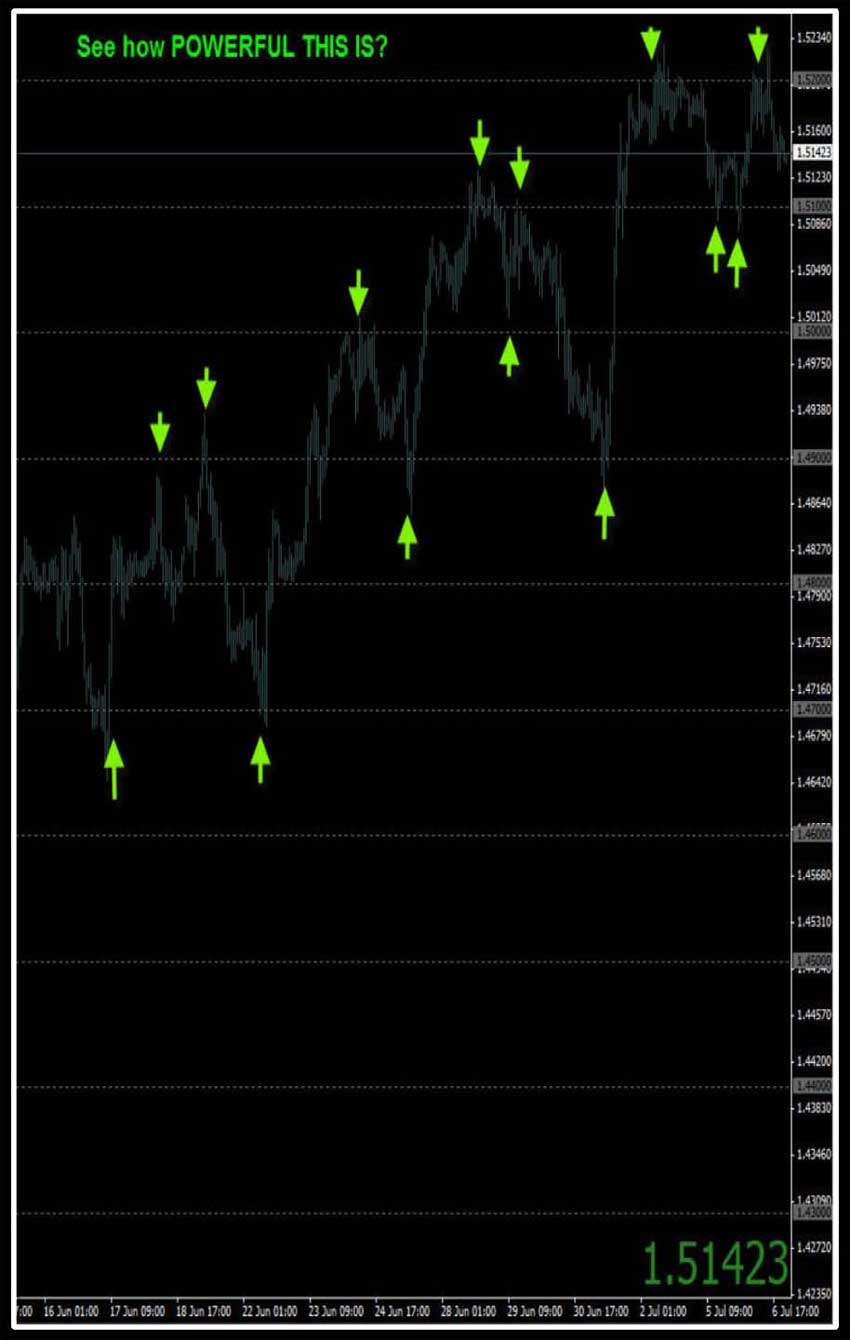
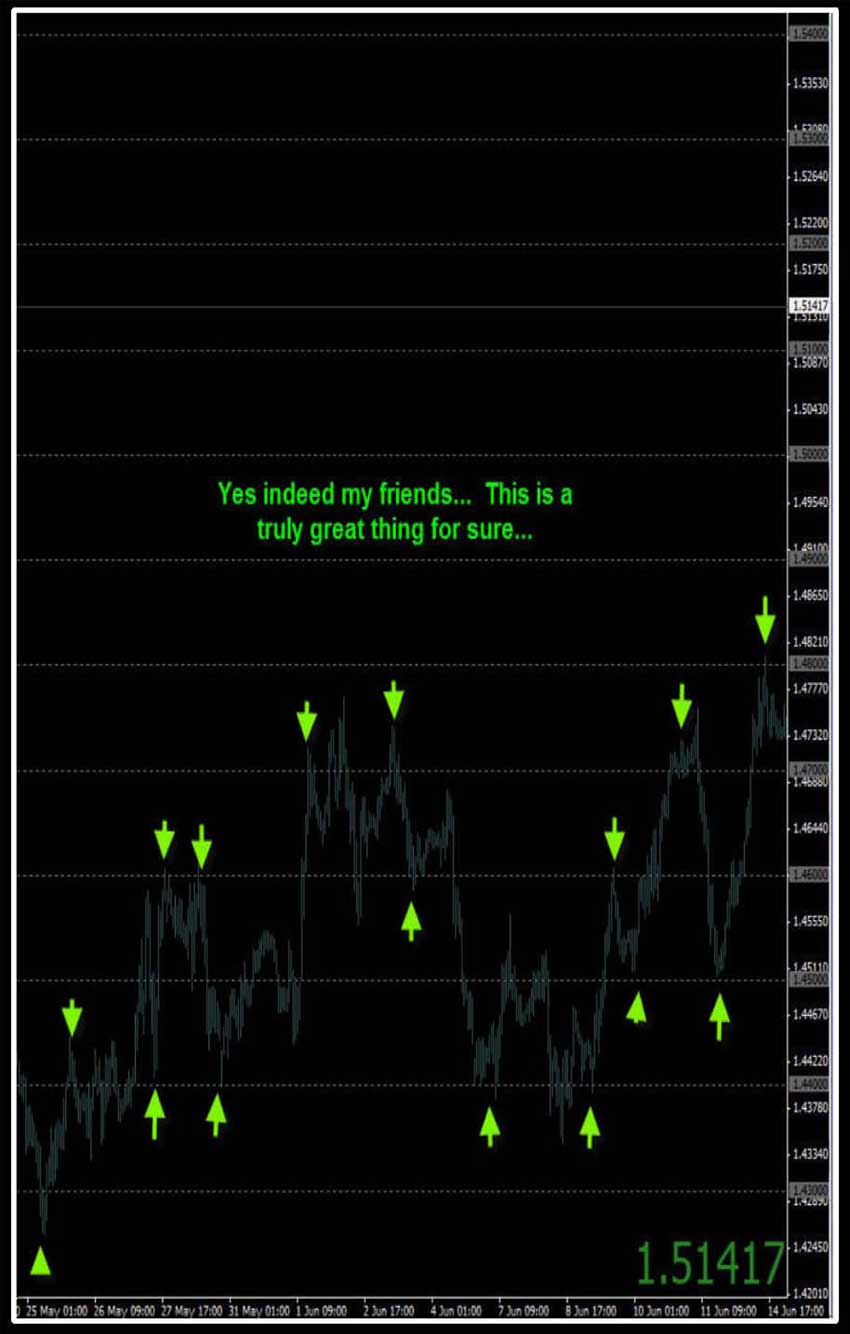
As you can see it doesn’t always come exactly to a whole number and bounce off of it every time? But more often than not time and time again it sure does act as a major support and resistance point of entry or exit.
And 1 more thing, as you can see when price is coming up to a whole number you don’t want to be buying into 1.5300 and if price is dropping down to a whole number you don’t want to be selling into 1.5100? Please try to think in an opposite way my friends?
ANALYZE Your Exits Ladies & Gents
The reason trading with a system is your best bet because most of the objective analysis is done before the trade is executed. Once a trader is in a -10 pip to -25 pip position he/she tends to analyze the market in a different way ‘hoping’ that the market will move in a favorable direction rather than objectively looking at the changing factors that may have turned against their original analysis.
{Men are the worst when it comes to holding onto a trade gone BAD! Why? Because men hate to lose!!! Women on the other hand seem to know how to control their emotions better than a man in the game of trading even though they are more emotional in nature then men. I know it sounds weird but it’s 100% True!}
This is especially true of losses.
Traders with a losing position tend to marry their position, which causes them to disregard the fact that all signs point towards continued losses. In this system, you will be show exactly where to place your stops. No more allowing your emotions to control your decisions.
Once that decision has been made, STICK WITH IT! If the price action turns around and goes back to the original direction if you get stopped out, you can always re-enter the trade when the trading guidelines have been met again.
However, once in a trade we have to try our best to manage it, so the way I like to do it is to do the 50% move stop profit management technique. Say we have a SL of 50 pips and we use a 2 to 1 win loss ratio just like I explained in the chapter above.
So then when we see 50 pips profit which is 50% we move our Stop Loss to break even, or even better, we move our Stop Loss to + 10 pips so then for sure we are managing our trade. Plus once we do that we are in a FREE trade as traders like to call it.
So let’s say after we move our Stop Loss to either break even or for a small profit would if we are in a buy trade and price moves up another 15 pips in our favor but now we are at a major resistance level, or better yet, a whole number – so what do we do? We analyze the situation and may consider taking 65 pips or so off the table instead of risking giving back all those 65 pips we just have accumulated.
So my friend, that is one way of exiting your trade… now let’s talk about a second and third way to take profits…
Trail 3 Bars Back Exit
Another good way to exit out of a winning trade is to keep moving your Stop Loss after each bar closes. I like to use the M15 time frame as it seems to work quite nicely, however, smaller time frames is too choppy for this style of exit in my honest opinion.
So once you have moved your Stop Loss to the break even point you can start to trail the trade by putting the Stop Loss 2 pips under the third bar back from the current bar in a buy trade, or on top of the bar by 2 pips if in a sell trade. Very simple way indeed… Let’s now take a look at an example:
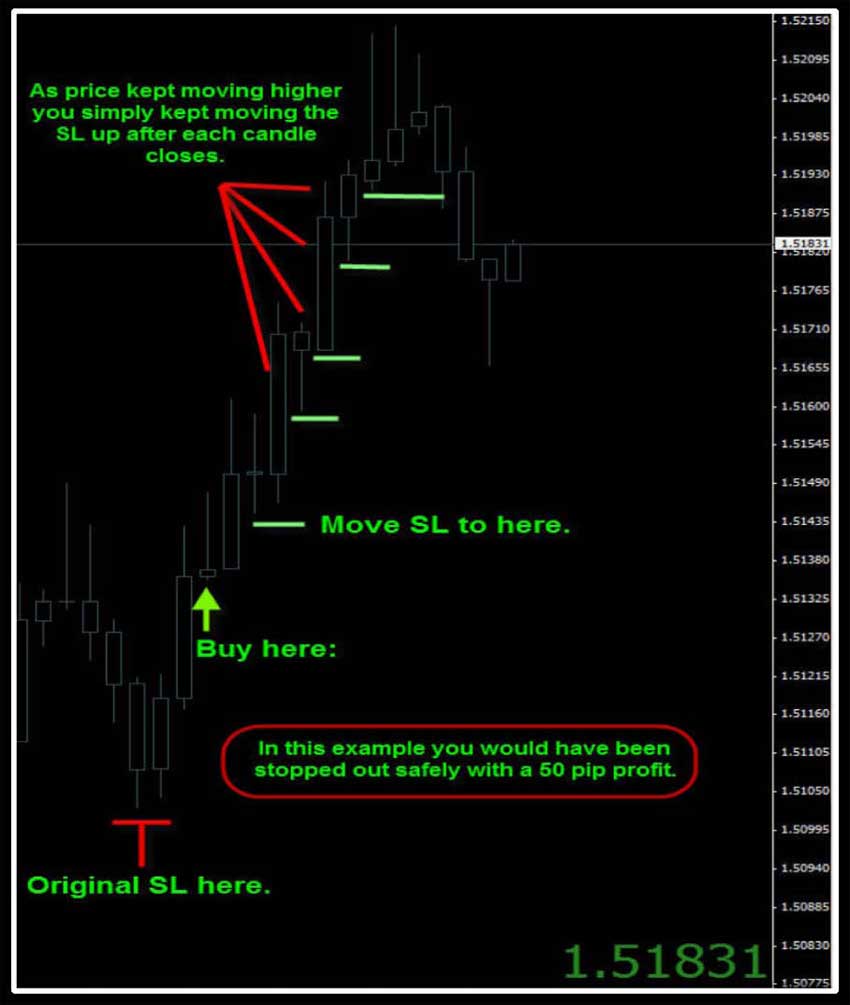
Forex – U – Turn Cross Over
Now we are going to get into my favorite way to exit a trade with pips won or with a trade gone BAD! What makes Forex – U – Turn unique all in its own is the formation I stumbled upon one day looking at a old system from 2 years ago I was trying to develop.
Yes even before 4XPipSnager ladies and gents… I just couldn’t seem to find any value in it back then and just forgot about it until a few month’s ago back in April is when I saw the ‘W’ to buy and the ‘M’ to sell…it was so cool to see this POP OUT at me I tell you… Let’s take a sneak peak to show you what I mean:
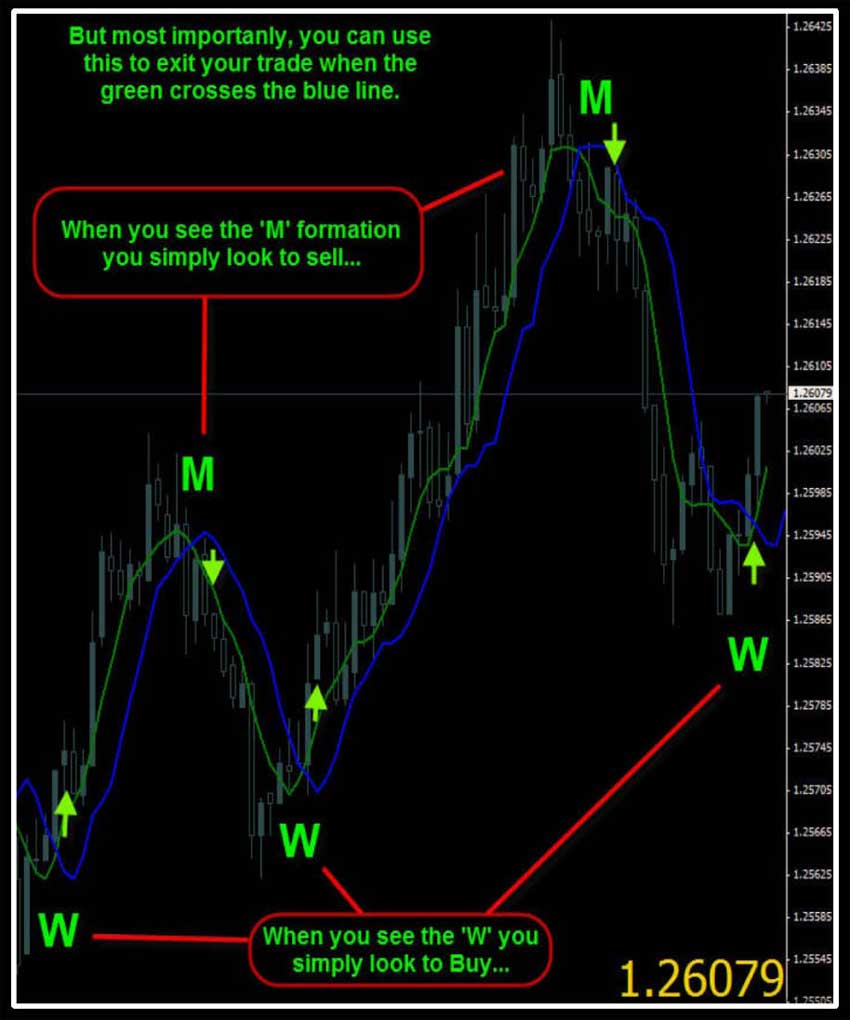
One more example for you to see how we exit the trade as I was more so showing you how the U – Turn formation is formed above in the last chart illustration…
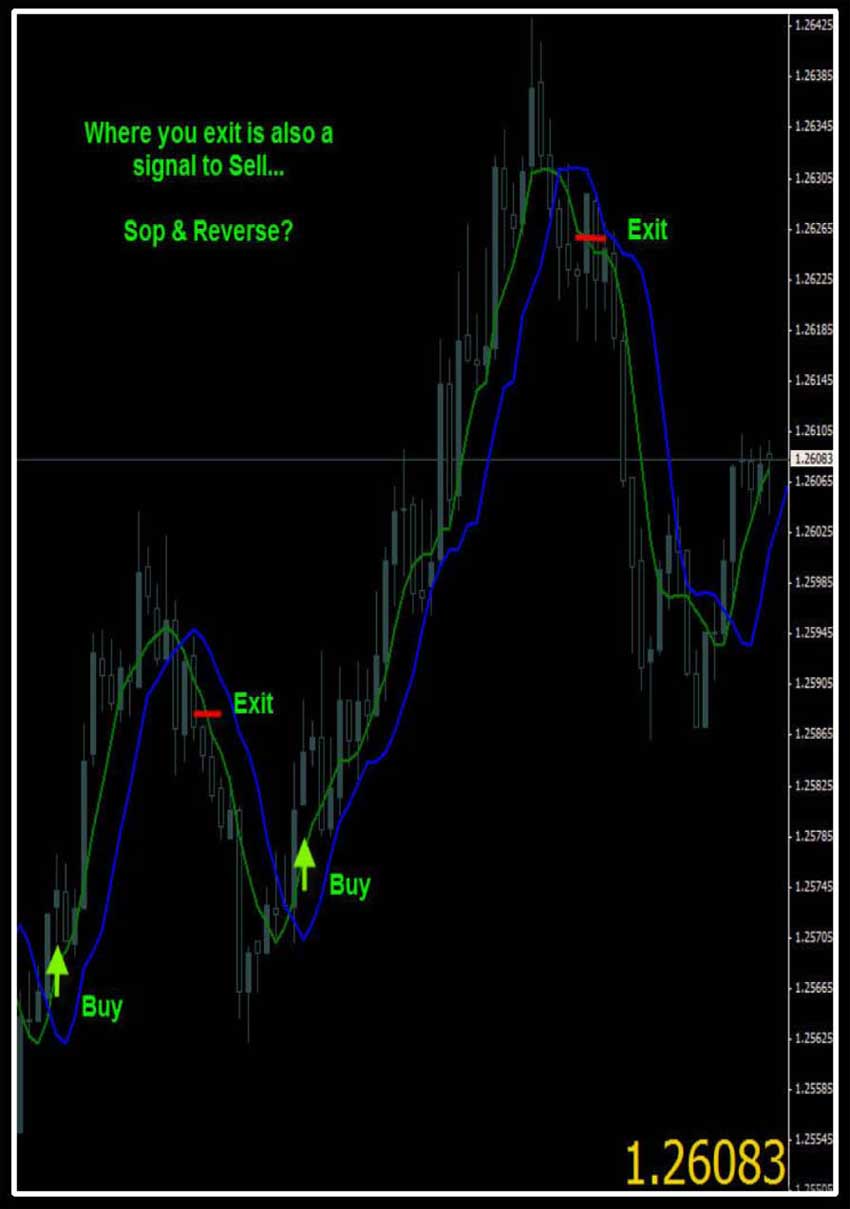
Very simple way of telling you that the near term trend has changed. But what’s really awesome about the Forex – U – Turn trading system is it will work on practically any time frame on any Market and at any time of the day.
So you can use it for ‘scalping’ ‘day trading’ ‘EOD’ End Of Day Trading and even long term investing as this amazing system will work on the weekly and monthly time frames… How do you like them apples? Like I have said before, this system is far superior to the 4XPipSnager trading system because you can use it as a ‘counter trend’ and ‘trend trading’ system.
Correct Stop Loss Placement
Before we get into the Aggressive and Conservative ‘Blue Prints’ of this trading system, I want to go over with you the correct place to put your Stop Loss so you won’t get Stopped Out prematurely…
There are 2 different ways to go about placing your Stop Loss in the correct spot. First let me show you the S&R Stop…where you simply place your Stop Loss 5 pips below the current swing low in a buy trade, or 5 pips above the swing high in a sell trade which is your closest support and/or resistance level:
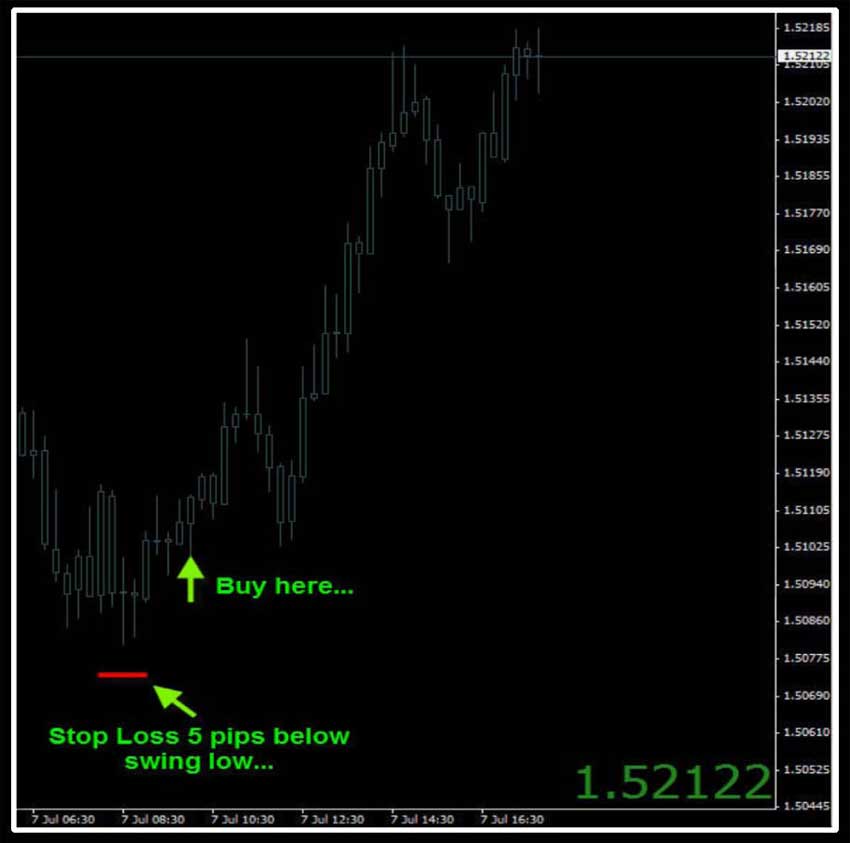
Here’s a sell Stop Loss example for you to see…
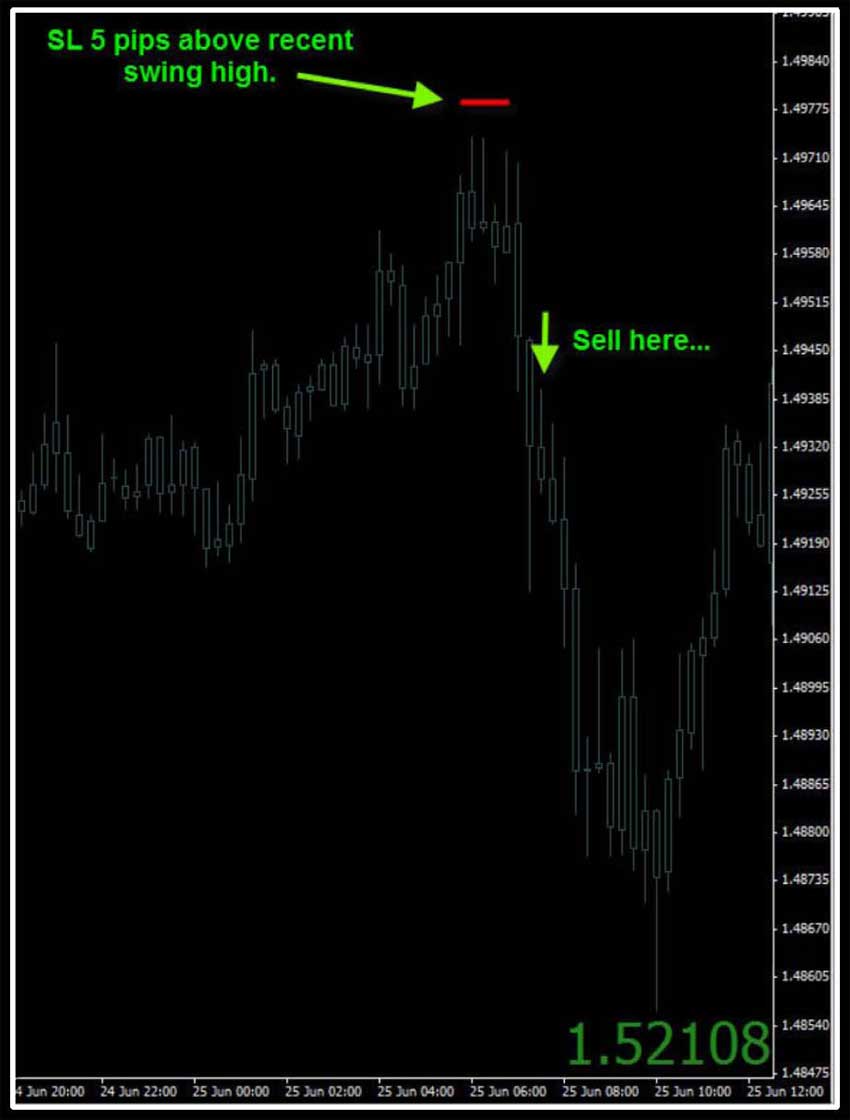
Now I want to go over another way to put your Stop Loss so the Big Dogs known as the Central Banks can’t ‘Hunt’ for your SL… It’s real simple, too. However, it does create more risk so you may have to adjust your money management a tad loser to compensate for this way of placing your Stop Loss Order…
All you do is simply find your closest support or resistance swing low or high, or if a major support or resistance is near by we will use that price level plus 40 to 50 pips for our Stop Loss like this:
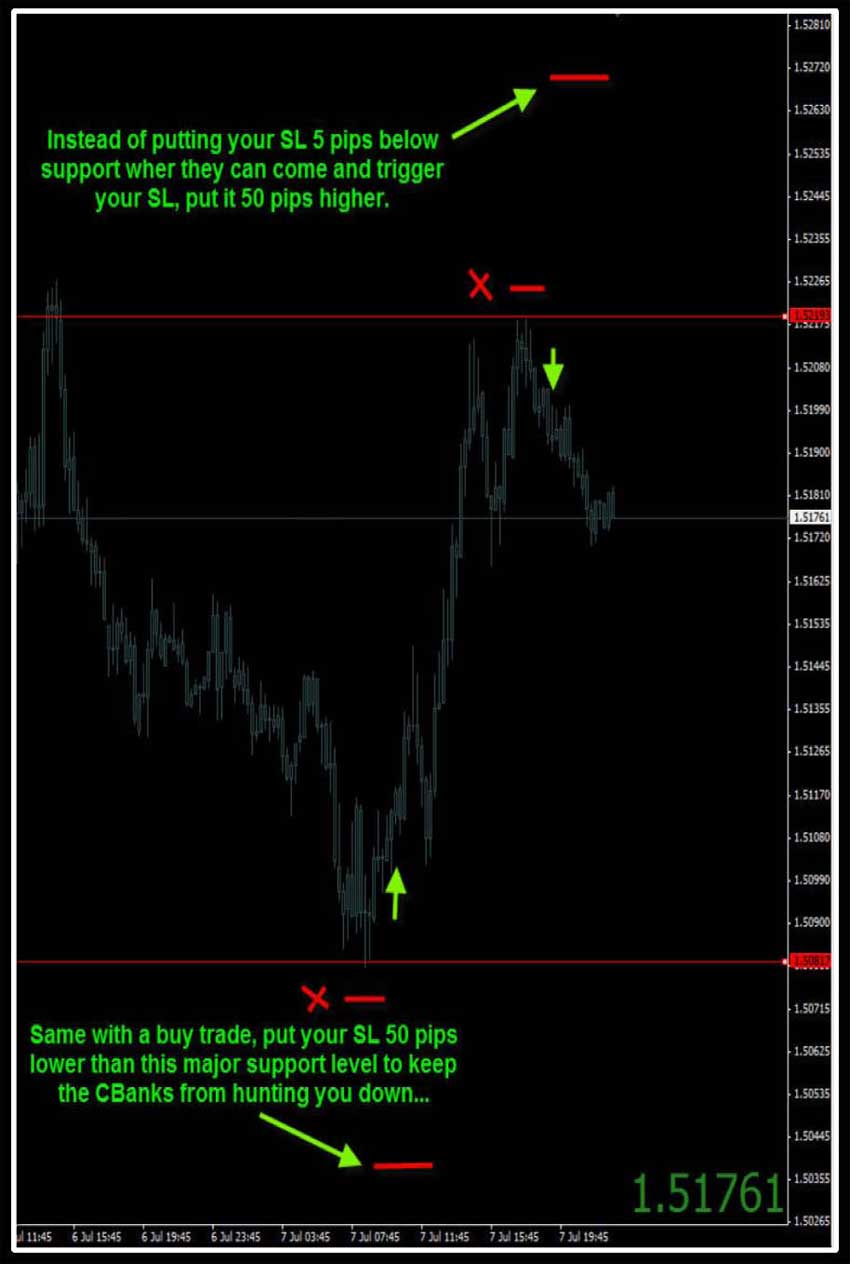
Forex – U – Turn Blue Print Buy Entry
First you will look for the ‘W’ formation on your chart like this:
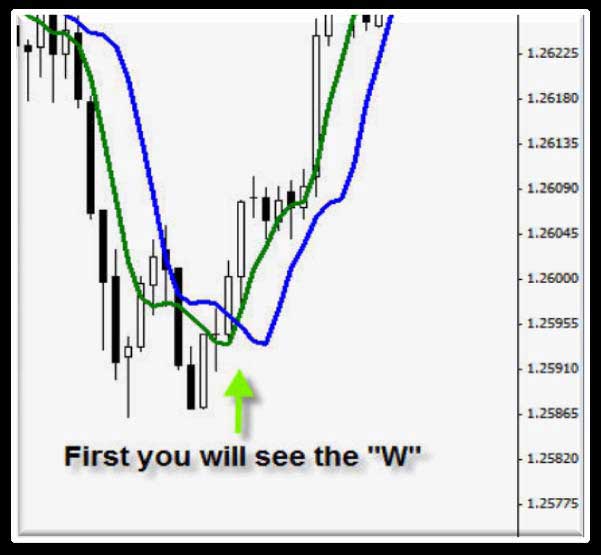
Second you will wait for confirmation in the Forex – U – Turn filter like this:
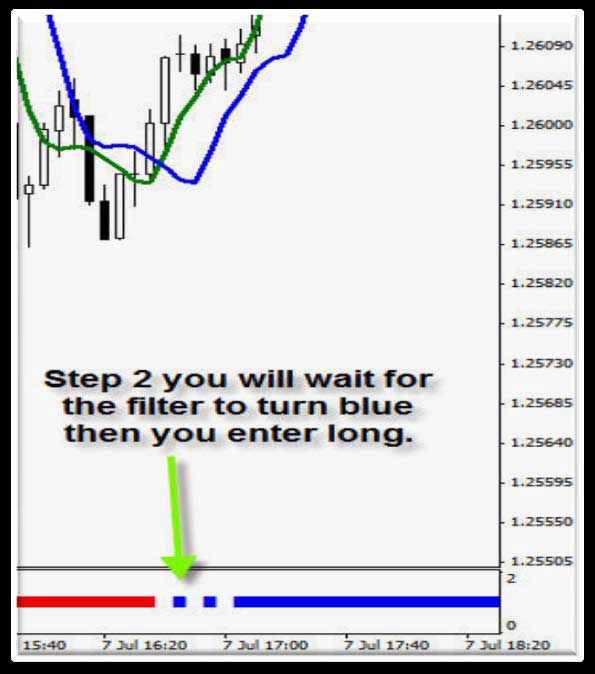
Forex – U – Turn Blue Print Sell Entry
First you look for the “M” formation on your chart like this:
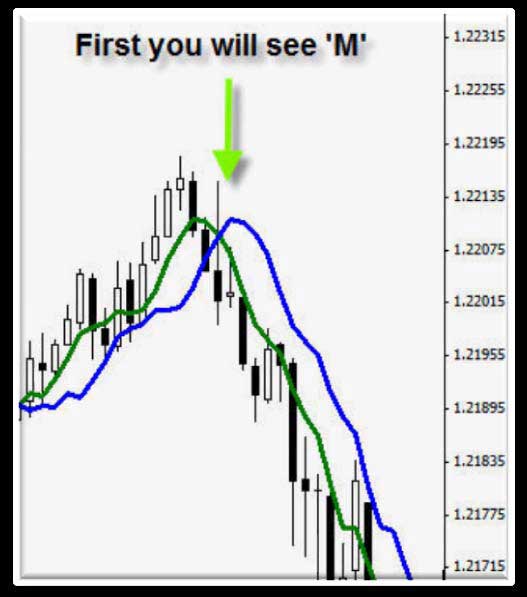
Second you will wait for confirmation in the Forex – U – Turn filter like
this:
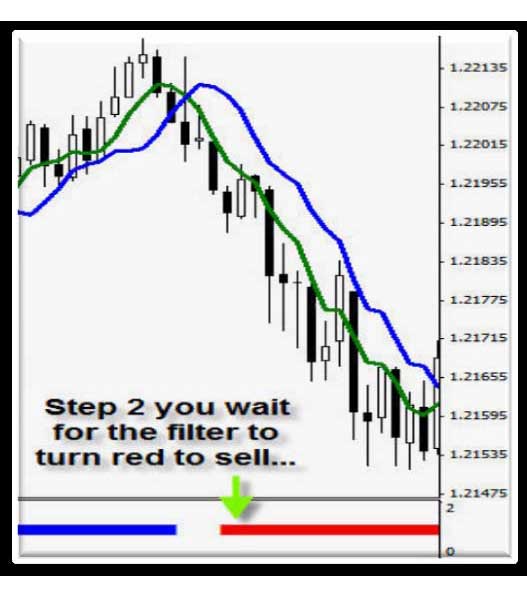
Forex – U – Turn Blue Print Aggressive Buy and Sell Entries
Above I showed you the conservative buy and sell entries using the filter for a second confirmation to pull the ‘Trigger!’ which is very simple I’ll have to say. Now I will show you how to use the advanced aggressive way to trade Forex – U – Turn trading system so you can get into the trade entries even faster…

So, when entering the market one must not just see a U – Turn formation and jump into the trade, you must consider all the factors I talked about above about money management and to be disciplined. And,
your most vital weapon of them all: “Support & Resistance!”
If a major support level is near by then you may want to consider NOT to Sell. Or if a major resistance level is near by you may want to consider NOT to Buy? Common sense tells you that “Support & Resistance” traders do the opposite so you should too…
Remember the whole numbers I talked about? Remember the Moving averages? Or how about drawing good old support and resistance horizontal lines on your chart? All these factors are ‘Vital’ to your success no matter what strategy or trading system you employ to trade for you on a daily basis.
The more tools you have to trade with, the better the chance you will have at becoming a successful trader in a game that 98% lose.
Chart Examples To Lean From
I want to show you a few examples of Forex–U–Turn buy and sell setups and a few important tips to try to stay out of BAD setups like tight ranging times of indecision:
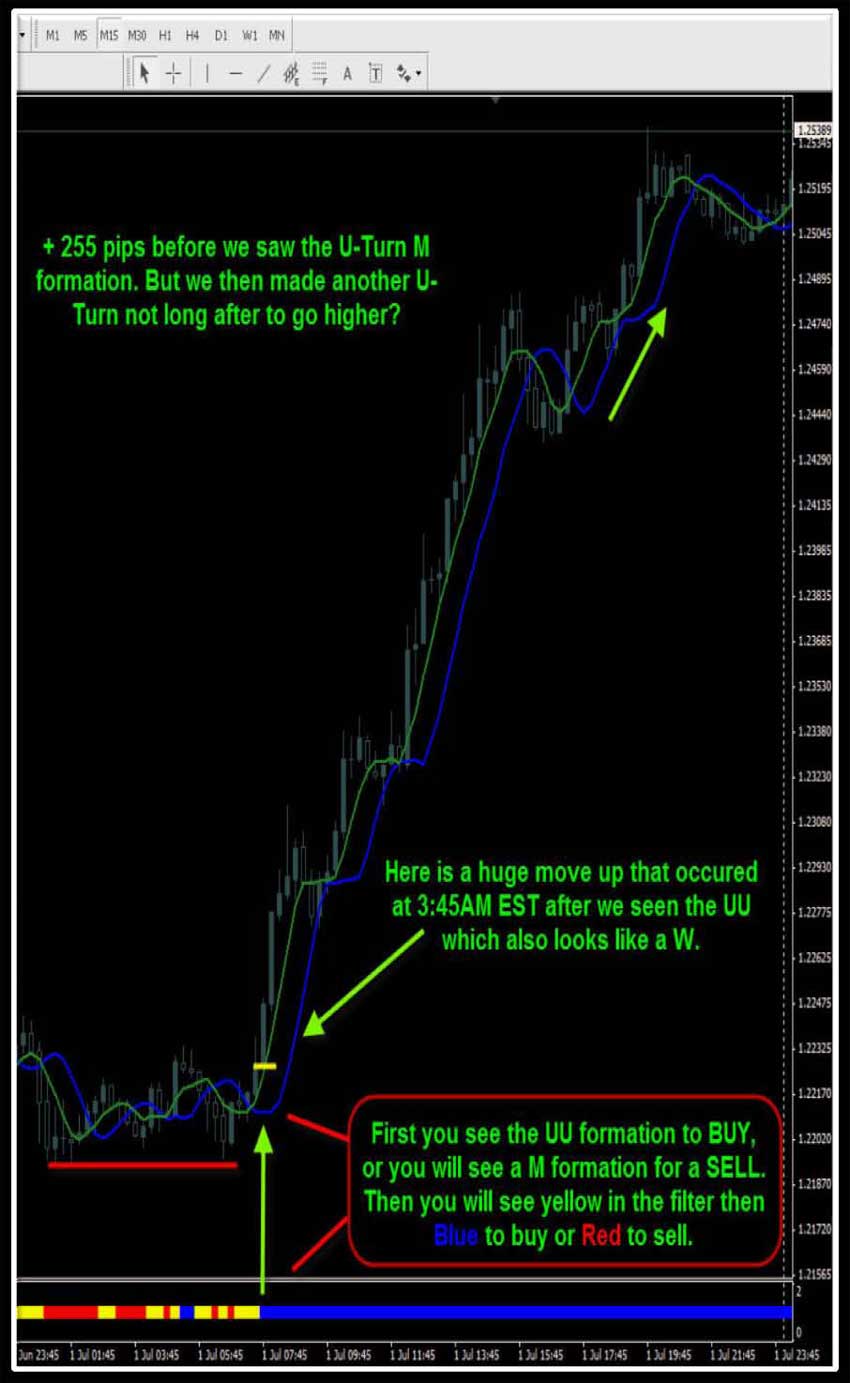
You see in this chart, there is Yellow in the filter? I myself like to have no neutral color in the filter so in other examples you will see this…I am leaving the choice of the trader to either make this color the same color as the chart or to choose a color like yellow to give them a pre warning that a buy or sell trade setup is near.
Now let’s look at a few tight range examples to learn when to “Stay Out” of the market:

Here is another one for you to learn from…

Do you see how there is no yellow in the filter below in these last 2 chart examples? I find it to be distorting to my eyes and a very important part of making trading simple and easy to do is to NOT LOAD up the chart with a bunch of indicators and a lot of different colors to distort and/or distract you.

Above you see the Warning Alert in action to ‘Pre Alert You’ when a Fresh U-Turn is about to occur. All you have to do after you get the alert is look for the ‘M’ formation on the chart for a Sell Trade Setup if you’re trading the system “Aggressively!” Or, if you’re trading the Forex-U-Turn Trading System conservatively you would simply wait for the FX U-Turn filter in the bottom of the chart to confirm the sell trade setup.
If you are doing a long trade setup, all you have to do after you get the alert is look for the ‘W’ formation on the chart for a Buy Trade Setup if you’re trading the system “Aggressively!” Or, if you’re trading the Forex-U-Turn Trading System conservatively you would simply wait for the FX U-Turn filter in the bottom of the chart to confirm the buy trade setup.
Lastly, I want to share with you some knowledge an old trader friend shared with me about Technical and Fundamental Analysis…
Technical Analysis Verses Fundamental
A lot of traders say they’re either a “Technical or Fundamental” when it comes to trading. The fact is, we’re all 100% fundamental traders it’s just that some of us don’t realize it yet. I myself used to like to say that I was 70% Technical and 30% Fundamental until I had it explained to me by a very prominent and well respected Grain Futures Broker by the name of Mr. Tim Hannagan which has over 40 years trading experience in the markets.
You see, a technical trader uses Technical tools available on a chart, where a Fundamental trader uses news elements. Before a major news element comes out which could be days, and sometimes weeks before the market fears the worst to happen – known as “Fundamental Analysis.” You’ll see a 3 or 4 day move before the news takes place. It will show up as a technical pattern on your chart, but the whole reason this happened in the first place was due to the “FEAR” of what “Could Happen” from a Fundamental element about to enter in the market.
Known as… “Buy The Rumor – Sell The Fact.” So in essence, we’re all “Technically 100% Pure Fundamental Traders.”
I just want to say thank you to Mr. Tim Hannagan for his mentorship, in years past as if it wasn’t for him to teach me nearly everything I know about trading it would have came a lot harder than it did.
At first he didn’t want to teach me, {he said you don’t want to learn the mechanics of trading?} but after bugging him for month’s on end he finally gave in and took me under his wing. We all have to learn from somewhere…trading or any other skill you master in life has to be taught and I sure hope you were able to learn a few important skills in this manual.












Thanks for your good writing to read.